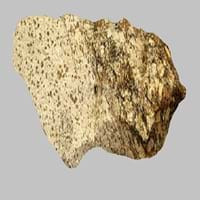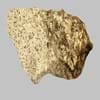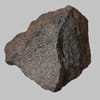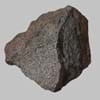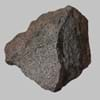Definition
Charnockite is a variety of granite containing minerals like orthopyroxene, quartz, and feldspar
Coal is a combustible black or brownish-black sedimentary rock usually occurring in rock strata in layers called coal beds
Origin
Tamil Nadu, India
USA
Discoverer
T. H. Holland
John Peter Salley
Etymology
From Job Charnock, an administtrator of East India Company
From the Old English term col, which has meant mineral of fossilized carbon since the 13th century
Class
Igneous Rocks
Sedimentary Rocks
Sub-Class
Durable Rock, Hard Rock
Durable Rock, Soft Rock
Group
Plutonic
Not Applicable
Other Categories
Coarse Grained Rock, Opaque Rock
Coarse Grained Rock, Fine Grained Rock, Medium Grained Rock, Opaque Rock
Texture
Granular
Amorphous, Glassy
Color
Black, Grey, Orange, Pink, White
Black, Brown, Dark Brown, Grey, Light to Dark Grey
Durability
Durable
Durable
Appearance
Veined or Pebbled
Veined or Pebbled
Interior Uses
Bathrooms, Countertops, Decorative Aggregates, Entryways, Floor Tiles, Homes, Hotels, Kitchens, Stair Treads
Not Yet Used
Exterior Uses
As Building Stone, As Facing Stone, Bridges, Paving Stone, Garden Decoration, Office Buildings, Resorts
Not Yet Used
Other Architectural Uses
Curbing
Not Yet Used
Construction Industry
As Dimension Stone
Cement Manufacture, for Road Aggregate, Making natural cement, Steel Production
Medical Industry
Not Yet Used
Not Yet Used
Antiquity Uses
Artifacts, Monuments, Sculpture, Small Figurines
Artifacts
Commercial Uses
Curling, Gemstone, Laboratory bench tops, Tombstones
Alumina Refineries, Electricity Generation, Liquid Fuel, Manufacture of Soap, Solvents, Dyes, Plastics and Fibres, Paper Industry
Types
Enderbite
Peat, Lignite, Sub-Bituminous Coal, Bituminous Coal, Anthracite, Graphite
Features
Available in Lots of Colors and Patterns, It is One of the Oldest, Strongest and Hardest Rock
Helps in production of Heat and Electricity, Used as fossil fuel
Archaeological Significance
Monuments
Used
Not Yet Used
Famous Monuments
Data Not Available
Not Applicable
Sculpture
Used
Not Yet Used
Famous Sculptures
Data Not Available
Not Applicable
Pictographs
Not Used
Not Used
Petroglyphs
Not Used
Not Used
Figurines
Used
Not Yet Used
Formation
Charnockite is an intrusive igneous rock which is very hard and is formed due to weathering of existing rocks.
Coal forms from the accumulation of plant debris in a swamp environment which is buried by sediments such as mud or sand and then compacted to form coal.
Mineral Content
Amphibole, Biotite, Feldspar, Hornblade, Micas, Muscovite or Illite, Olivine, Plagioclase, Pyroxene, Quartz
Analcime, Apatite, Barite, Calcite, Chalcopyrite, Chlorite, Chromite, Clausthalite, Clay Minerals, Crandallite Group, Dolomite, Feldspar, Galena, Gypsum, Marcasite, Muscovite or Illite, Pyrite, Quartz, Siderite, Sphalerite, Zircon
Compound Content
Aluminium Oxide, CaO, Iron(III) Oxide, FeO, Potassium Oxide, MgO, MnO, Sodium Oxide, Phosphorus Pentoxide, Silicon Dioxide, Titanium Dioxide
Carbon, Hydrogen, Nitrogen, Oxygen, Sulphur
Types of Metamorphism
Burial Metamorphism, Contact Metamorphism, Regional Metamorphism
Burial Metamorphism, Cataclastic Metamorphism, Regional Metamorphism
Types of Weathering
Biological Weathering
Not Applicable
Types of Erosion
Chemical Erosion, Water Erosion, Wind Erosion
Not Applicable
Grain Size
Coarse Grained
Medium to Fine Coarse Grained
Fracture
Not Available
Conchoidal
Porosity
Very Less Porous
Less Porous
Luster
Not Available
Dull to Vitreous to Submetallic
Cleavage
Not Available
Non-Existent
Toughness
Not Available
Not Available
Specific Gravity
Not Available
1.1-1.4
Transparency
Opaque
Opaque
Density
2.6 g/cm3
1100-1400 g/cm3
Specific Heat Capacity
Not Available
Resistance
Heat Resistant, Wear Resistant
Heat Resistant
Deposits in Eastern Continents
Asia
India
Bangladesh, Burma, Cambodia, China, India, Indonesia, Kazakhstan, Malaysia, Mongolia, Pakistan, Turkey, Vietnam
Africa
East Africa, Ethiopia, Madagascar, Morocco, Mozambique
Botswana, Kenya, Morocco, Mozambique, South Africa, Tanzania
Europe
Albania, Romania, Scotland, United Kingdom
Belgium, Bulgaria, England, France, Germany, Greece, Hungary, Kosovo, Netherlands, Norway, Poland, Romania, Serbia, Slovakia, Slovenia, The Czech Republic, Ukraine, United Kingdom
Others
Not Yet Found
Not Yet Found
Deposits in Western Continents
North America
USA
Canada, Mexico, USA
South America
Brazil, Colombia, Venezuela
Brazil, Chile, Colombia, Venezuela
Deposits in Oceania Continent
Australia
Central Australia, Western Australia
New South Wales, Queensland, Victoria
All about Charnockite and Coal Properties
Know all about Charnockite and Coal properties here. All properties of rocks are important as they define the type of rock and its application. Charnockite belongs to Igneous Rocks while Coal belongs to Sedimentary Rocks.Texture of Charnockite is Granular whereas that of Coal is Amorphous, Glassy. Charnockite appears Veined or Pebbled and Coal appears Veined or Pebbled. The luster of Charnockite is not available while that of Coal is dull to vitreous to submetallic. Charnockite is available in black, grey, orange, pink, white colors whereas Coal is available in black, brown, dark brown, grey, light to dark grey colors. The commercial uses of Charnockite are curling, gemstone, laboratory bench tops, tombstones and that of Coal are alumina refineries, electricity generation, liquid fuel, manufacture of soap, solvents, dyes, plastics and fibres, paper industry.
